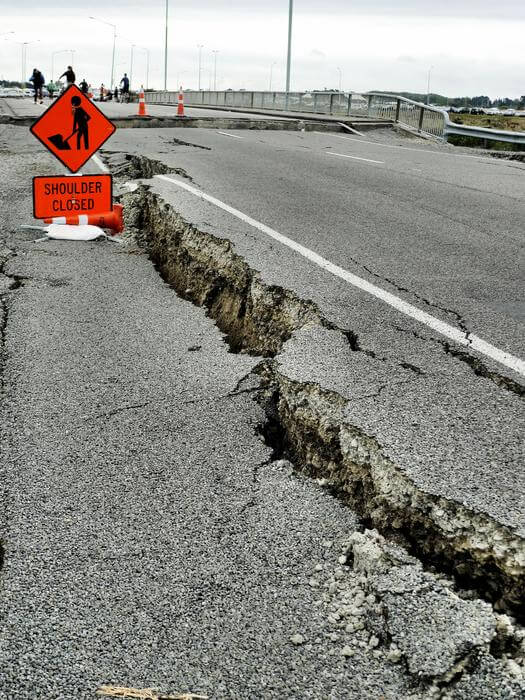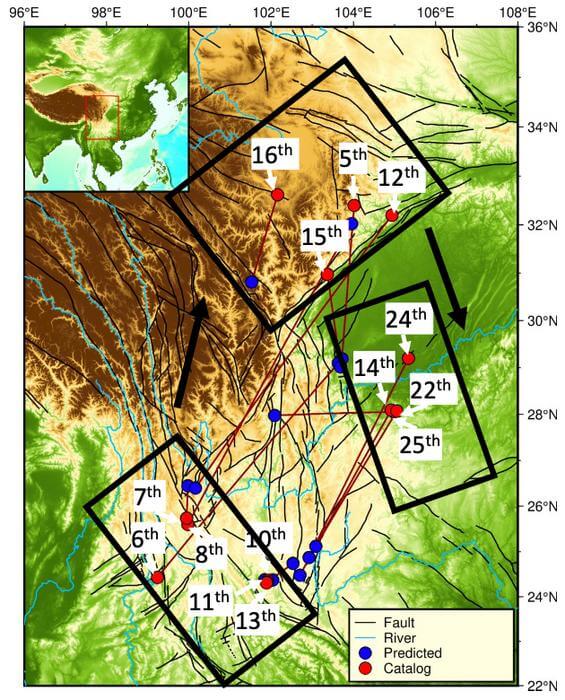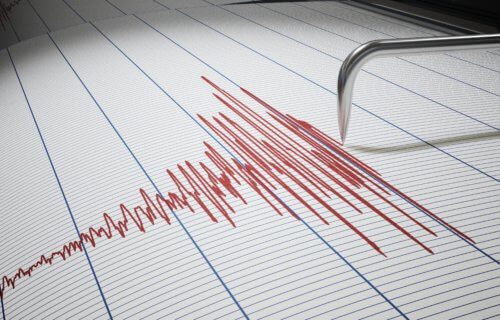AUSTIN, Texas — Earthquakes are undoubtedly scary no matter how intense they are, but one of the most unnerving aspects of seismic activity is its surprise nature. Earthquakes often appear without any warning, and depending on their severity, can potentially uproot entire communities and destroy countless buildings. Now, however, potentially groundbreaking new research reports artificial intelligence has the potential to help better predict and mitigate the damage of imminent earthquakes.
Developed by a team of scientists at the University of Texas, Austin, study authors report their new AI algorithm has already shown incredible promise. The program correctly predicted 70 percent of earthquakes a full week before they occurred during a seven-month trial in China.
Scientists trained the new algorithm to look for and detect statistical bumps in real-time seismic data paired up by researchers with previous earthquakes. This led to the AI program producing a weekly earthquake forecast that successfully predicted 14 earthquakes within about 200 miles of where it estimated they would occur. The program’s strength calculations for the predicted earthquakes were also quite accurate. However, the program missed one earthquake entirely and issued eight false warnings as well.
Right now, the research team admits they cannot say if their AI program will work at other locations. Still, this work is clearly a milestone when it comes to research for AI-driven earthquake forecasting.
“Predicting earthquakes is the holy grail,” says Sergey Fomel, a professor in UT’s Bureau of Economic Geology and a member of the research team, in a media release. “We’re not yet close to making predictions for anywhere in the world, but what we achieved tells us that what we thought was an impossible problem is solvable in principle.”

This trial was conducted as part of an international competition held in China, and the UT-developed AI placed first out of 600 other designs. The researchers’ entry into the competition was led by bureau seismologist and the AI’s lead developer, Yangkang Chen.
“You don’t see earthquakes coming,” explains Alexandros Savvaidis, a senior research scientist who leads the bureau’s Texas Seismological Network Program (TexNet) — the state’s seismic network. “It’s a matter of milliseconds, and the only thing you can control is how prepared you are. Even with 70%, that’s a huge result and could help minimize economic and human losses and has the potential to dramatically improve earthquake preparedness worldwide.”
The research team believes their method succeeded because they stuck with a relatively simple machine learning approach. The AI was provided with a grouping of statistical features based on the team’s knowledge of earthquake physics, and then instructed to train itself using a five-year database of seismic recordings.
Once trained, the AI provided its forecast by listening for signs of incoming earthquakes within the background rumblings in the Earth.
“We are very proud of this team and its first-place finish in this prestigious competition,” comments Scott Tinker, the bureau’s director. “Of course, it’s not just location and magnitude, but timing that matters as well. Earthquake prediction is an intractable problem, and we can’t overstate the difficulty.”

Study authors are confident their AI algorithm could produce even more accurate predictions if used in areas with robust seismic tracking networks like Turkey, Japan, Italy, Greece, Texas, and California. In such places, researchers believe the AI would likely see its success rate improve, all while narrowing its predictions to within a few dozen miles.
Another big step moving forward is to test the artificial intelligence in Texas, since the Lone Star state usually experiences a high rate of minor and some moderate-magnitude earthquakes. UT’s Bureau TexNet hosts 300 seismic stations and over six years’ worth of continuous records, making it an ideal location for these purposes.
Eventually, study authors hope to integrate the system with physics-based models. This strategy could prove especially important where data is poor, or in places such as Cascadia, where the last major earthquake happened hundreds of years before seismographs were invented.
“Our future goal is to combine both physics and data-driven methods to give us something generalized, like chatGPT, that we can apply to anywhere in the world,” Chen notes.
“That may be a long way off, but many advances such as this one, taken together, are what moves science forward,” Tinker concludes.
The study is published in the Bulletin of the Seismological Society of America.

